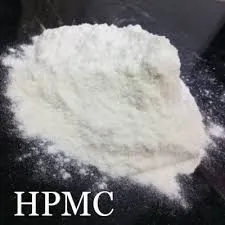
Nov . 24, 2024 07:42 Back to list
hpmc formulation
Understanding HPMC Formulation A Comprehensive Overview
Hydroxypropyl Methylcellulose (HPMC) is a cellulose derivative increasingly gaining traction in various applications, particularly in the pharmaceutical, food, and cosmetic industries. Its formulation involves careful consideration of several factors that contribute to its unique properties and functionalities. In this article, we will explore the essential aspects of HPMC formulation, highlighting its significance and applications.
What is HPMC?
HPMC is a white, odorless powder derived from natural cellulose. Its chemical structure consists of hydroxypropyl and methoxy groups that are introduced to the cellulose backbone, resulting in improved solubility and functional properties. This modification enables HPMC to dissolve in hot or cold water, forming a clear, viscous solution. Due to its versatility, HPMC serves various roles, including thickening, film-forming, and stabilizing agents in formulations.
Key Properties of HPMC
The unique properties of HPMC make it an attractive option for formulators. These properties include
1. Viscosity Modulation HPMC can adjust the viscosity of a formulation based on concentration and molecular weight. This ability is critical in pharmaceutical suspensions and emulsions, where maintaining a consistent viscosity is crucial for product efficacy.
2. Film-Forming Ability HPMC can form flexible and transparent films, making it an ideal ingredient for coatings in pharmaceuticals and cosmetics. These films can protect active ingredients, enhance stability, and improve appearance.
3. Bioadhesive Properties Due to its hydrophilic nature, HPMC can adhere to biological surfaces, enhancing drug delivery systems. It is often used in ophthalmic and buccal formulations to improve the residence time of a drug.
Applications of HPMC
hpmc formulation

1. Pharmaceuticals HPMC is extensively used in the formulation of tablets, capsules, and controlled-release drug products. Its ability to modify release rates allows for tailored drug delivery, improving therapeutic outcomes. Additionally, its film-forming capabilities are utilized in enteric coatings, protecting drugs from degradation in the gastrointestinal tract.
2. Food Industry In the food sector, HPMC serves as a thickening agent, stabilizer, and emulsifier. It is particularly valued in gluten-free products, where it enhances texture and mouthfeel. HPMC is also used in low-fat and reduced-calorie foods for its gelling properties.
3. Cosmetics and Personal Care HPMC is a popular ingredient in shampoos, conditioners, and lotions due to its thickening and stabilizing properties. It helps improve the product's texture and enhances the sensory experience for consumers.
4. Construction In construction applications, HPMC is often added to cement-based systems for its water retention properties. This enhances workability and reduces crack formation in mortar and plaster.
Formulation Considerations
When formulating with HPMC, several factors must be taken into account
- Molecular Weight The viscosity and thickening capabilities of HPMC are highly dependent on its molecular weight. High molecular weight grades are preferred for applications requiring higher viscosity levels.
- Concentration The amount of HPMC used can significantly influence the final product's characteristics. Formulators must optimize concentration levels to achieve the desired viscosity without compromising other properties.
- pH and Ionic Strength HPMC is relatively stable across a wide pH range, but extreme pH conditions or high ionic strength can affect its solubility and functional performance.
Conclusion
The formulation of Hydroxypropyl Methylcellulose presents numerous opportunities across various industries. Its multifunctional properties make it a vital ingredient in pharmaceuticals, food products, and cosmetics. By understanding the critical aspects of HPMC formulation, formulators can leverage its advantages to develop innovative products that meet the evolving needs of consumers and industry standards. Through continued research and application, HPMC remains a cornerstone in modern formulation science, promising enhanced efficacy, stability, and consumer acceptance.
-
Versatile Hpmc Uses in Different Industries
NewsJun.19,2025
-
Redispersible Powder's Role in Enhancing Durability of Construction Products
NewsJun.19,2025
-
Hydroxyethyl Cellulose Applications Driving Green Industrial Processes
NewsJun.19,2025
-
Exploring Different Redispersible Polymer Powder
NewsJun.19,2025
-
Choosing the Right Mortar Bonding Agent
NewsJun.19,2025
-
Applications and Significance of China Hpmc in Modern Industries
NewsJun.19,2025







